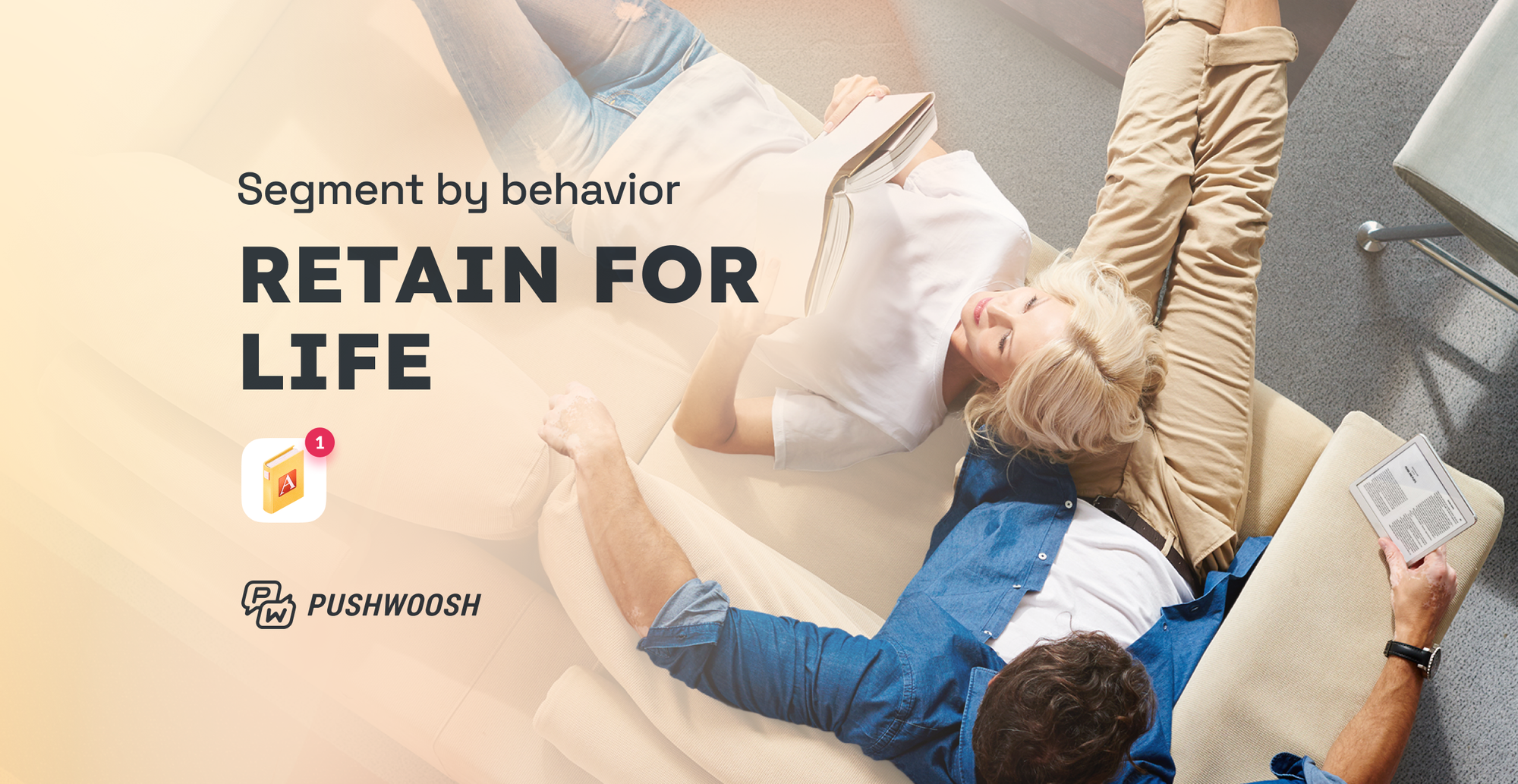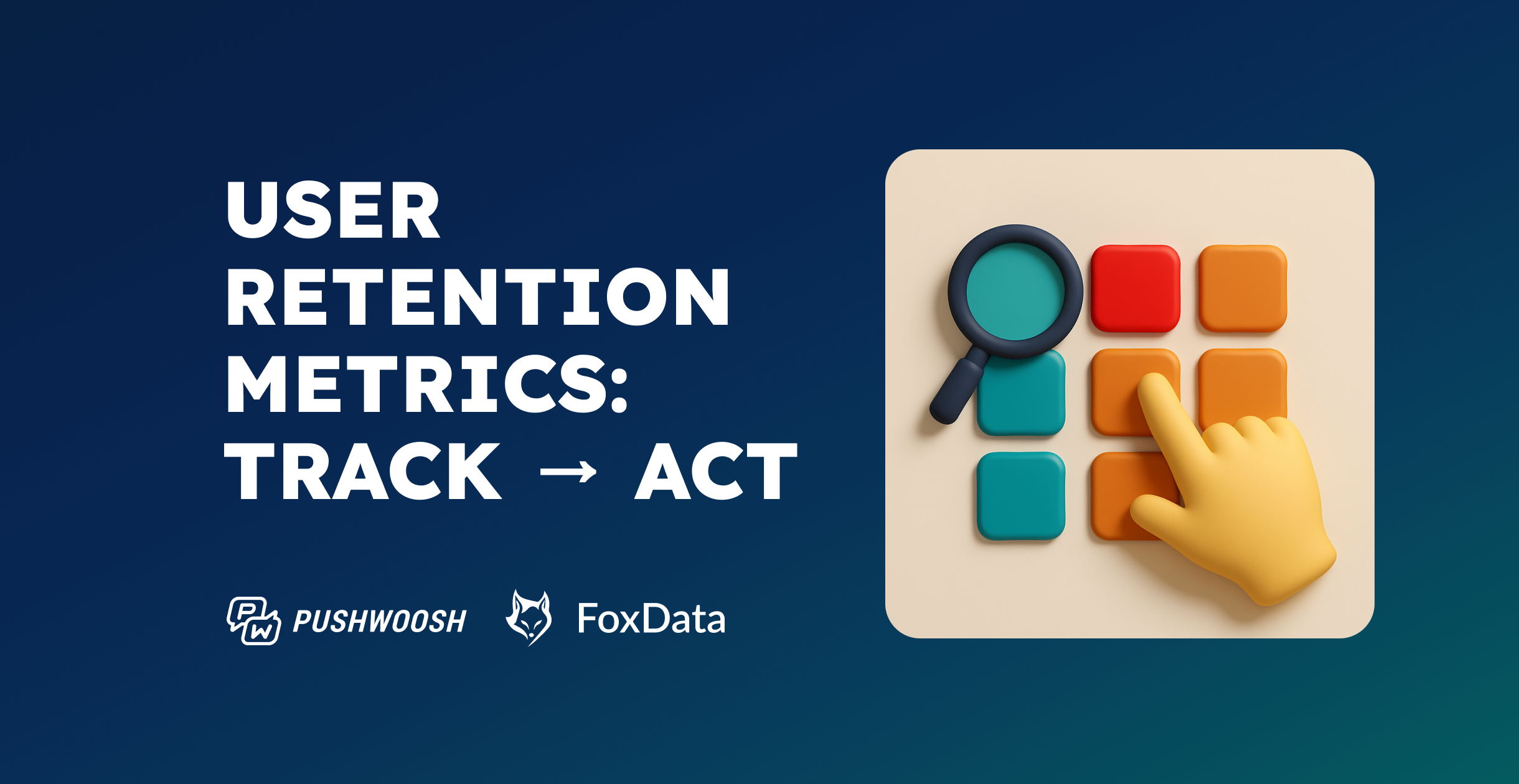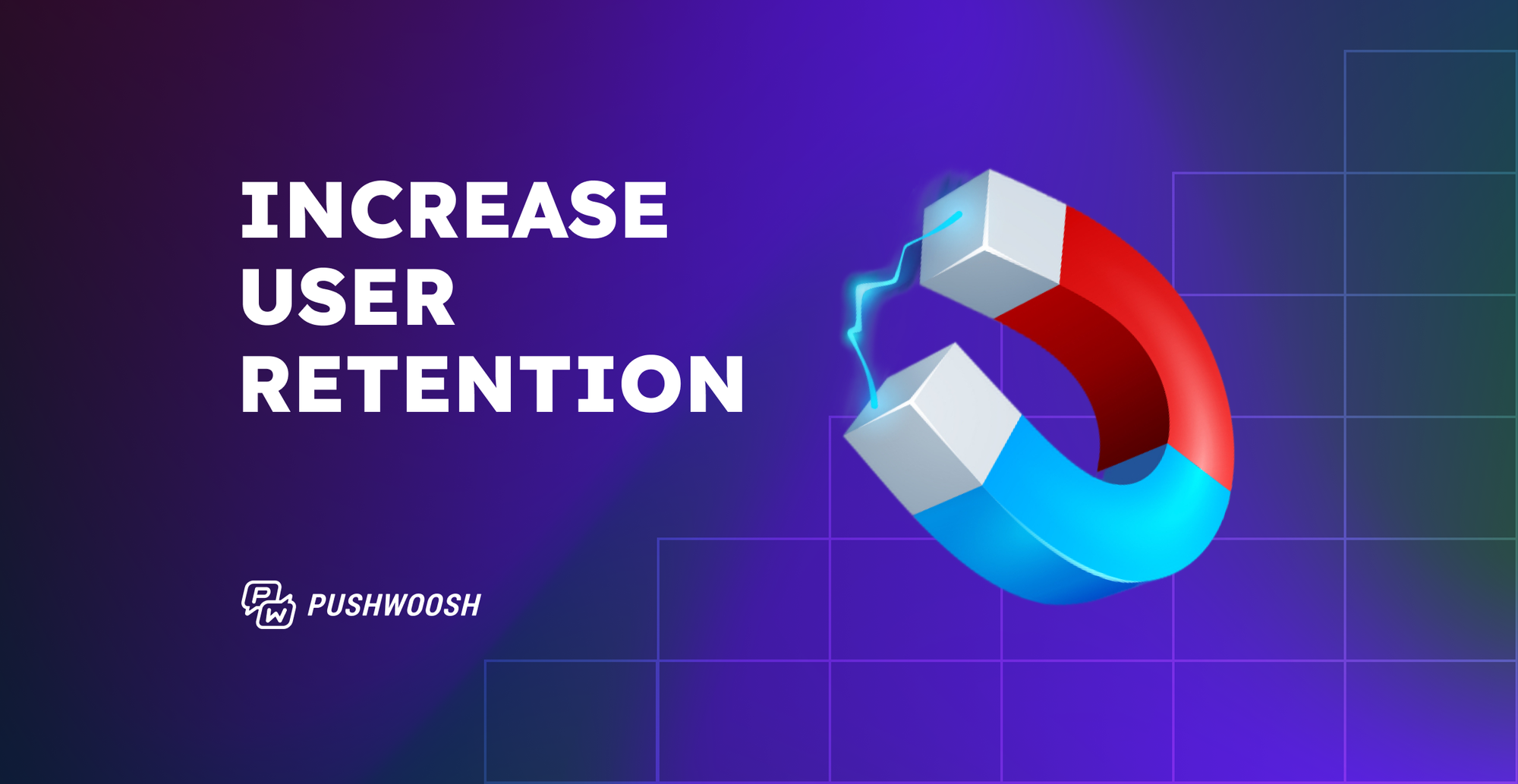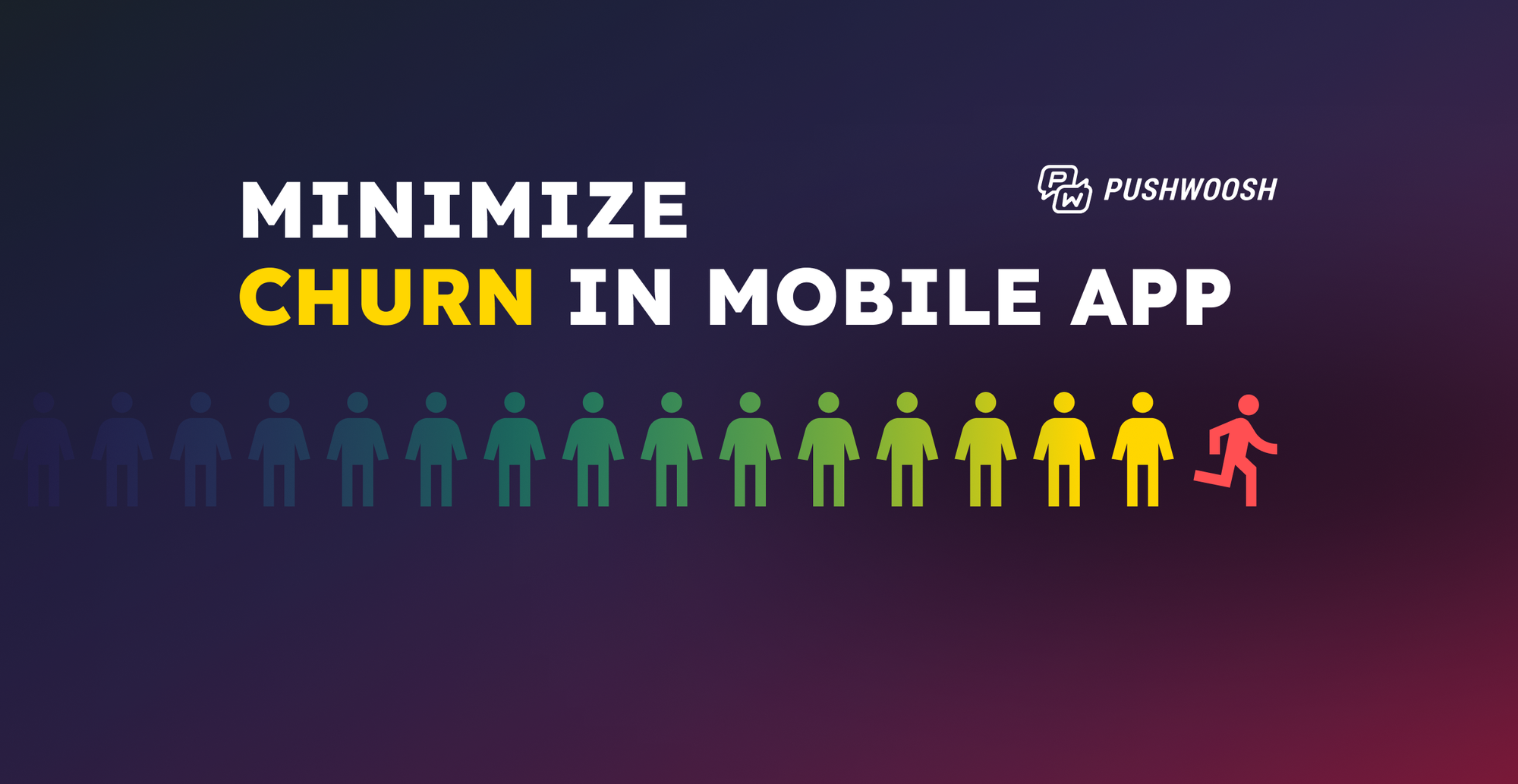User segmentation for retention: 4 Strategies based on events
Boosting app retention starts with engaging users in ways that align with their needs and expectations. But how can you achieve such personalization? Effective user segmentation is the answer. Let’s see how you can apply event-based segmentation with Pushwoosh and build a strategy that makes sense for your business.
In this guide, we’ll explore the 4 key retention-based segmentation strategies. You’ll learn when and how to use them—and get practical tips for engaging and retaining users within each segment.
What is event-based segmentation (and why do you need it)?
Here’s the simple truth: If your offers resonate with what your users are looking for, they’re more likely to respond positively and come back for more.
According to research, brands sharing personalized in-apps see retention rates soar to 61%—74% within just 28 days—compared to 49% achieved with broadcast campaigns.
So, how can you build an effective personalization strategy?
Start with event-based segmentation that categorizes your mobile app users by their behavior.
Unlike conventional segmentation techniques, it leverages triggered user events—such as making purchases or engaging with specific app features.
How event-based segmentation works
Imagine being able to engage your users with the right message at the right time, every time.
That’s the goal of event-based segmentation.
🔍 It lets you assess user engagement and loyalty in real time and identify potential high-value customers.
🚀 You can then craft effective personalized messages to boost conversions and revenue.
How to segment your app users based on events
The first step is identifying the core actions users take within your app, such as account creation, completing key user actions, feature utilization, and whether they’ve subscribed or made an in-app purchase where applicable. By analyzing these behaviors, you can create initial segments that reflect different levels of engagement and value.
For example, segmenting users into categories such as new, active, and lapsed users can help you tailor your marketing efforts to each group’s stage of the user lifecycle and match their needs.
New users can be determined by recent account creation, active users by regular interaction and engagement with key features, and lapsed users by identifying those who have significantly reduced or ceased app activity over a specific period.
New users might benefit from onboarding tutorials, while active users might appreciate notifications about new features, products, or reward programs. Lapsed users, on the other hand, may respond well to re-engagement campaigns with special offers or updates about recent improvements.
The best part? Automation tools like Pushwoosh let you implement this strategy in just a few clicks—without extra hassle.
Let’s dive into the 4 top event-based segmentation strategies and see how they can boost your app retention.
We recommend using each of those methods at specific pointsof your business lifecycle, depending on your current goals and the context.
1. Purchase behavior-based segmentation
Choose this strategy to:
• Achieve retention goals that are tied to revenue metrics
• Increase your app’s average CLV (customer lifetime value) and reduce costs
Looking to pinpoint users that can become your app’s revenue boosters?
Start with purchase behavior-based segmentation.
This method sorts customers by their buying history—e.g., by tracking how frequently they’ve made purchases, the types of products they’ve bought, and so on.
To automate this step, use Pushwoosh’s RFM Segmentation tool. It helps you categorize customers by their value-to-date and tailor promotional offers accordingly.
For instance, the RFM segmentation chart pinpoints users with the greatest potential to pay—your ‘Champions.’
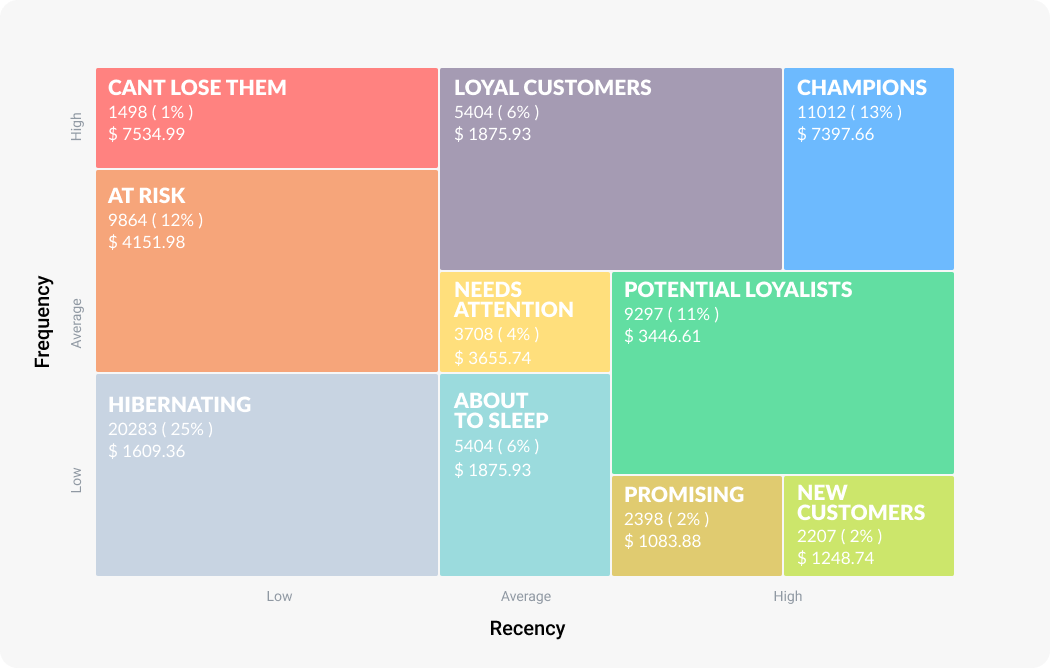
Customers with higher ‘Frequency’ and ‘Recency’ values are more likely to respond to exclusive offers and loyalty bonuses.
To engage them, set up a campaign in Pushwoosh Customer Journey Builder and program push notifications or emails offering premium benefits. Those could include special discounts, early access to new features, etc.
👗 Example: Imagine you’re building a retention strategy for a fashion e-commerce app.
In this case, consider targeting your ‘Champions’ with push notifications and emails that offer exclusive benefits through membership and loyalty programs.
Analyze your campaign conversions to boost effectiveness
Remember: Your retention campaigns should be as dynamic as your users.
To get the most out of purchase-based segmentation, it’s best to continuously analyze and fine-tune your messaging sequences.
Specifically, you want to track if users make purchases after interacting with your offers. This insight helps you refine your strategies on the go, directly connecting campaign performance to revenue outcomes.
Use analytics tools in Pushwoosh Customer Journey Builder to implement this step.
Start by defining conversion goals for your campaign. Go to ‘Conversion goals’ and add the key metrics you want to measure. For example, purchases, average order value, engagement with exclusive offers, and so on.
You can then easily track conversion rates at every point throughout the campaign.
For example, check how many users engaged with your exclusive offers. How’s the push notification performing? Is there room for further optimization?
Performance metrics are displayed right under each message element in Pushwoosh Customer Journey Builder
It’s also a good idea to visualize how users move through the key touchpoints of your campaign.
Use the Conversion Funnel tool to see how each campaign stage impacts conversions and find areas of growth (and potential bottlenecks).
First, define the core events to keep an eye on—for example, making a purchase or subscribing to a loyalty program.
➡️ Navigate to ‘Conversion Funnel’ in the Conversion tab, select the funnel steps you wish to track and click ‘Show Funnel.’
2. Engagement-based segmentation
Choose this strategy to:
• Retain active app users and increase their value
• Engage users who show potential to become active and loyal customers
Purchase-related actions are important, but they don’t always show the whole picture.
To dig deeper, group users based on how they interact with your app—e.g., how often they open it and what features they use the most.
Some companies choose to create generic engagement-based user segments. For example:
- Casual: Users active less than 5 days/month
- Core: Users active 5–15 days/month
- Power: Daily users
- Dormant: Users who have been inactive for over a month
In truth, user interaction paths are nonlinear, meaning that even your most active users risk becoming dormant without ongoing engagement.
So, how can you prevent this from happening?
👉 Create custom segments based on real-time engagement and design data-driven personalized messaging sequences.
Step 1: Start with trigger-based targeting
Use Pushwoosh Customer Journey Builder to engage and nurture users based on their interactions with your app. For example:
- Your fashion app user opens a push notification about new products and browses them without adding anything to the shopping cart:
💬 Display an in-app message with a limited-time offer for selected items.
- The user interacts with the in-app message and selects products for purchase but stops short of completing the transaction:
⚡Program a push notification reminding them about items in the cart.
- After the user completes the purchase:
🥳Display a congratulatory in-app message with a reward or bonus points to encourage further engagement.
💌 Arrange for a follow-up email to be sent later, featuring similar products and exclusive offers.
Step 2: Continue with advanced segmentation
Once you’ve accumulated sufficient user data and custom event history, try the Pushwoosh advanced segment builder.
It lets you design customer segments based on:
- Historical data on user behavior;
- Users’ characteristics + previous behavior;
- Groups of filters.
This approach helps you further fine-tune your personalized offers, making them more targeted and effective.
From the Pushwoosh Control Panel, go to ‘Audience’ → ‘Segments (Filters)’ and click ‘Create Segment.’
Here, you can build detailed segments using various engagement metrics.
👗 Example: A fashion e-commerce app could group active users who have:
- Opened the app more than 15 times in the last 30 days.
- Interacted with a key feature (e.g., a virtual try-on) at least 5 times during the same period.
You can then target these users with a push notification featuring a special offer—e.g., a discount for their favorite clothing items.
Step 3: Use RF(M) segmentation
As you gather more data on user behavior, you’ll be able to try more advanced engagement-based segmentation methods.
RFM segmentation typically focuses on purchase history. However, Pushwoosh effectively enables RF segmentation by allowing you to omit monetary data from the equation.
This approach segments users by their recent and frequent interactions with core app events—such as logins, feature usage, and in-app achievements.
For instance, it can help you identify segments for re-engagement:
😎 ‘Can’t lose them’
😲 ‘At risk’
🥱 ‘Hibernating’
These users interacted with your app long ago and need an extra boost.
You can re-activate them with personalized emails encouraging them to log back into the app—hopefully, you still have their email contacts!
👗 Example: To re-engage users, a fashion e-commerce app can send a series of emails that showcase outfit ideas and promote limited-time sales.
3. Retention-based segmentation
Choose this strategy to:
• Reduce customer churn and re-activate your dormant users
• Engage and retain your most loyal app users
The next segmentation method shifts our focus toward a critical goal: reducing customer churn.
Retention-based segmentation helps you identify users who are most likely to remain active—and those at risk of becoming dormant.
When used alongside other segmentation methods, it can give your retention strategy a powerful boost.
Let’s dive into the key methods for building retention-based customer segments.
RFM Segmentation for retention
Start by using the Pushwoosh RFM Segmentation tool you’re already familiar with.
First, it’ll help you identify app users with the highest retention potential. Those segments include:
🤩Loyal customers: Frequent, high-value spending users.
🏆Champions: Customers with the highest willingness to pay.
Then, use it to define user segments that need to be re-activated:
🥱About to sleep
⚠️At risk
💡Jump to this section to learn about strategies for engaging these customers.
Predictive analytics
Another method you can try is predictive analytics, which dives into past user data to give you a sneak peek into future trends.
This advanced approach helps you stay one step ahead and further enhances your user retention strategy.
To give it a try, start with Amplitude’s predictive analytics and seamlessly integrate them with Pushwoosh for effective customer re-engagement.
1️⃣ Identify users on the verge of churn using your Amplitude data.

2️⃣ Export these segments to Pushwoosh and set up re-activation messaging sequences.

How to engage retention-based user segments
Once you’ve identified users who are about to churn, it’s time to re-engage them with personalized messages.
Idea #1: Send customized push notifications highlighting features users have yet to explore.
👗 Example: A fashion e-commerce app could program push notifications promoting a new “Outfit Builder” feature and follow up with a discount for the top-selling items.
Overall, providing exclusive offers and personalized promo codes can do wonders for your retention strategy.
🌟 Success story: Omada has achieved great results with push notifications featuring special offers, resulting in a notable 4% increase in Day 30 retention among its app users.
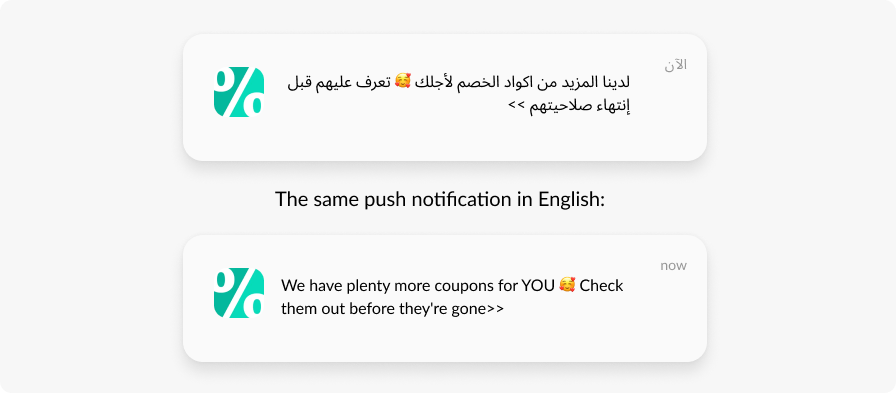
Idea #2: Target users with high retention potential.
While these customers are already active, it’s important to keep them engaged and increase their value.
Since an average app loses 77% of its daily active users (DAUs) within the first 3 days after install, investing in their retention now makes perfect sense (and cents!). Besides, this strategy lets you generate additional revenue with upsells and upgrades.
To achieve this, target your active app users with personalized messages about customized promotions, tailored recommendations, and loyalty programs.
For instance, you can send push notifications and emails with special offers based on users’ favorite products and brands.
Or, you could tailor your offers to product categories the user is most interested in.
🌟 Success story: Bantoa, a fashion e-commerce app, achieved CTRs in the range of 58.7% to 91.9% (!) by sending personalized push notifications through Pushwoosh:
4. Segmentation based on acquisition data
Choose this strategy to:
• Retain newly acquired users with personalized communications
• Enhance targeting for segment-specific campaigns, using acquisition source data to align your marketing messages with user interests.
Let’s wrap up with the last segmentation method that leverages your existing marketing data. More specifically, it draws on user acquisition data as a source of insights for your retention strategies.
Users might land on your app through various channels—think social media ads or display banners. Knowing their starting point lets you understand why they decided to use your app—and fine-tune your messages accordingly.
This approach is especially useful when you don’t have enough data about a user’s in-app behavior yet but want to personalize an offer.
🚀Did you know you can create acquisition-based segments with Pushwoosh? Try our integration with AppsFlyer to enhance your Pushwoosh lifecycle campaigns with AppsFlyer’s user acquisition data.
👗 Example: A user may install your fashion e-commerce app through an ad promoting the latest summer collection. Knowing this, you can design messages to showcase similar styles or feature new arrivals in that collection, which will resonate more deeply.
Boost your app retention with event-based segmentation
User segmentation can be a powerful tool for improving your app’s retention rate.
Many Pushwoosh clients have achieved impressive results by shifting their strategy towards personalization. For instance, Bantoa increased its D30 retention by 37% by sending customized notifications to registered users.
The secret? Using trigger events to revealwhat users are looking for and give it to them exactly when they need it.
You can start simple or craft an advanced event-based retention campaign right off the bat. With Pushwoosh, it’s a breeze—get started and count how many hours you will save.


















